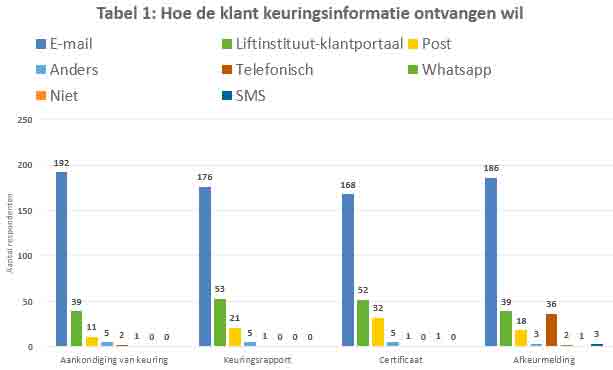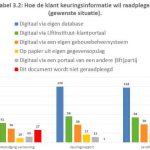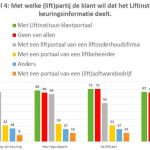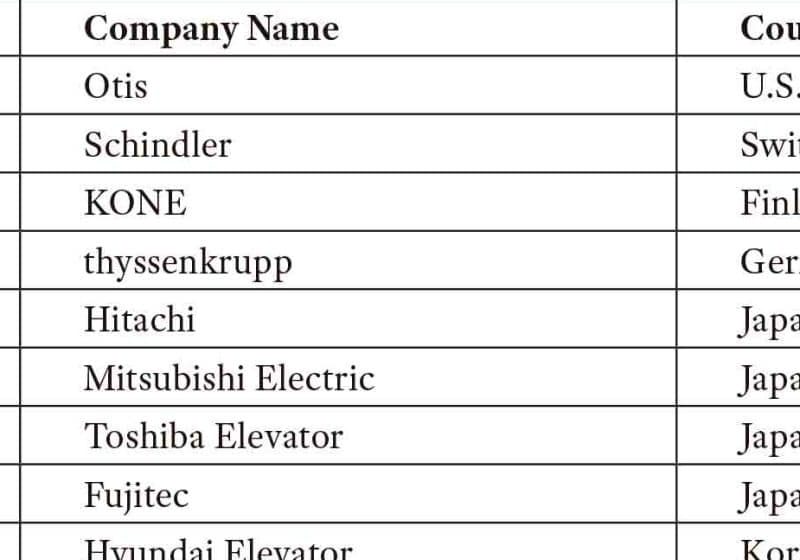Efficiency of Lift Maintenance Enhanced by Digitalizing Data
Dec 1, 2017

Liftinstituut sees how customers want to gain an overview of their customer data via remote monitoring.
By Koos van Lindenberg and Joey Tienhooven
Various parties in the lift industry collect lift use, maintenance and inspection data via remote-monitoring systems in a digital portal. There is also a development of organizing lift maintenance based on this real-usage data. This is being encouraged by lift technical advisory bureaus, and large lift companies such as Otis and KONE see the benefit of this and have gotten involved. Real lift usage data makes it possible to achieve the necessary maintenance within budgets. This is, therefore, a great development.
Research by Liftinstituut
Liftinstituut is one of the first organizations in the Netherlands to disclose data for customers via a portal. Since then, various remote-monitoring systems have come onto the market, provided by lift manufacturers, lift control-system manufacturers, as well as software companies, offering (particularly larger) organizations a portal-based tool to optimize lift management by producing files for use, faults, maintenance and inspection data in several locations. Many developments in this area were presented at Interlift 2017 in October by Modusystem, Böhnke + Partner and Henning, to name but a few.
Liftinstituut carried out a study to obtain an overview of inspection data. The results have been surprising. One of the things for lift owners to bear in mind is that the use of portals may be more time consuming for the inspector and engineer, as they need to enter extra data into third-party digital systems, in addition to their usual reporting. This may lead to additional costs and a compromise in terms of maintenance or inspection efforts.
Standardization
Building owners have lifts from various manufacturers, which are maintained by these manufacturers, as well as brand-independent lift maintenance providers. Each increasingly works with its own remote-monitoring systems and web portals. It is virtually impossible for all these companies to bundle or standardize this data in a useful way for the building owner. The owner wants to see one clear overview: are my lifts functioning properly, and do they have the necessary safety certificates? It will be increasingly important for lift technical advisory bureaus to have one accessible overview containing more detailed data about the functioning of all the lifts in their care. If they need to log into several systems to do so, their work efficiency will be negatively affected.
The Survey
Increasingly more lift owners and management providers consult inspection data from their own archive or via a customer portal (by Liftinstituut or others). In view of this, Liftinstituut has decided to look into its customers’ wishes in respect to receiving, storing and consulting inspection data. The results of this June 2016 study are presented here and based on the information needs of 489 customers. These customers consist of lift owners and management providers owning or managing a minimum of 25 lifts. Among the 489, 200 customers took part in the survey. They answered the following questions:
- How do you want to receive inspection data?
- How do you currently store inspection data?
- How do you want to store inspection data in the future?
- How do you currently consult inspection data?
- How do you want to consult inspection data in the future?
- With which (lift-related) parties do you want Liftinstituut to share inspection details?
- Via which customer portal do you want to consult inspection data in three years’ time?
During the survey, all respondents had the opportunity to indicate several preferences. It is, therefore, possible that the total number of answers exceeds the total number of respondents, 200.
The vast majority (181 out of 200 respondents) want to receive inspection data by email. Also, the vast majority want to receive inspection data via the Liftinstituut customer portal, too. A striking find is that there is no need for inspection data to be received by phone, text or a WhatsApp message.
Half of the respondents who indicated that they currently store inspection data in paper format indicated that they want to store inspection data differently in the future. The vast majority of them indicated that they want to store inspection data electronically in their own database. Also, there is an increasing need to store this digital inspection data in a building management system. A striking discovery is the little need to store inspection data from Liftinstituut into another (lift-related) party’s portal. Only six of the 192 respondents (3%) opted for this.
Most respondents (116 of 200) who currently consult inspection documents via their own digital database want to continue to do so in the future (113 out of 200). A part of them indicated that they consult inspection data via Liftinstituut’s customer portal, too. Something striking is the few respondents who consult inspection data via another (lift-related) party’s portal. Only three out of 200 respondents indicated doing so (1.5%). Thirteen out of 172 respondents indicated that they want to do so in the future.
One-third of the respondents (67 out of 200) do not want Liftinstituut to share inspection data with other (lift-related) parties. Another third of the respondents want Liftinstituut to share inspection data with lift maintenance providers’ portals. The striking part is that the other (lift-related) parties’ portals are a lot less popular among the respondents. The portals of (lift-related) software companies are the least popular. Only 11 out of 200 respondents want Liftinstituut to share inspection data via these portals.
Half of the respondents (86 out of the 176) indicated that they want to consult inspection data via Liftinstituut’s customer portal after three years. This is twice as many as the number of respondents who indicated that they currently consult inspection data there. Among the external parties, the maintenance companies’ portals are the most popular. On average, 31 out of 176 respondents want to consult inspection data via these portals after three years. Here, too, the (lift-related) software companies’ portals are the least popular. On average, 14 out of the 176 respondents indicated that they want to consult inspection data via these portals after three years. The large number of respondents (on average, 45 out of 176) who do not want to consult inspection data in three years’ time is striking.
- Table 1: Number of respondents: 200
- Tables 2.1 and 2.2: Number of respondents: 192
- Tables 2.1 and 2.2: Number of respondents: 192
- Tables 3.1, 3.2 and 3.3: Number of respondents: 172
- Tables 3.1, 3.2 and 3.3: Number of respondents: 172
- Tables 3.1, 3.2 and 3.3: Number of respondents: 172
- Table 4: Number of respondents: 200
- Table 5: Number of respondents: 176
Get more of Elevator World. Sign up for our free e-newsletter.

















